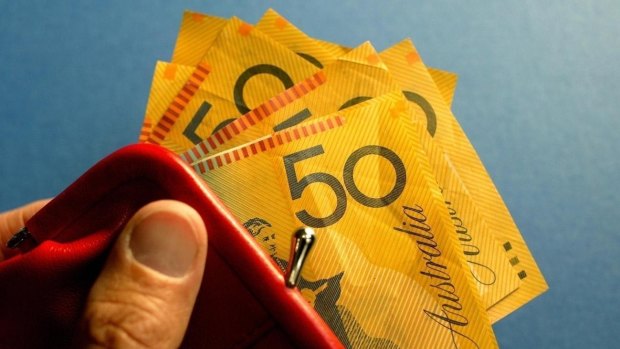By Shane Wright
Australians have not yet used their stage 3 tax cuts to go on a spending spree, new figures show, amid signs inflation could fall to its lowest level in years as government subsidies and cheaper petrol take price pressures out of the economy.
Data compiled by Westpac from 1 million customers suggests that the tax cuts, which started on July 1, have been mostly saved despite people enjoying a large boost to their incomes.

A Westpac study of customers suggests people have saved rather than spent their tax cuts.Credit: Gabriele Charotte
Ahead of the tax cuts, some analysts were concerned the cuts, worth about $17.90 a week to someone on $50,000 and almost $42 a week for a person earning $100,000 a year, would lead to a spike in spending and inflation.
These concerns increased after the federal government revamped the tax cuts so that all workers received at least some modest tax relief with the start of the new financial year.
But Westpac economist Jameson Coombs said the anonymised data from the bank’s customers suggested that, at this stage, the tax cuts were being squirrelled away in savings accounts.
He said the tax cuts had delivered, on average, a $220 boost in post-tax income to people through July. Other forms of income added a further $860.
But 70 per cent of the overall extra income has flowed into savings, with no evidence of extra spending in any particular age group.
“While there was a very noticeable boost to income in July, there was no significant spike in spending over and above the normal month-to-month volatility,” he said.
“However, there was a significant spike in savings inflows in July. In both seasonally adjusted and original terms, savings inflows in July were the largest since mid-to-late 2021.
“As tax cut benefits accumulate over time, households may choose to adjust spending. But for the time being, there is no evidence that stage 3 tax cuts have had a meaningful impact on spending behaviour.”
Coombs said that while over a full year, the tax cuts were valuable to most workers, on a monthly basis, they were relatively modest compared to other normal fluctuations in income.
If households continue to save their tax cuts rather than spend them, that would allay concerns of an inflation breakout in the second half of this year.
Figures to be released this week by the Australian Bureau of Statistics are expected to show the monthly measure of inflation falling to around its lowest level since 2021 when the economy was emerging from the COVID-19 pandemic.
Prices are tipped to have fallen last month, bringing the overall inflation rate down to about 3.3 per cent from 3.8 per cent in June. A drop in inflation would be the first July fall since the bureau started its monthly Consumer Price Index.
ANZ senior economist Catherine Birch, who is expecting an annual inflation rate of 3.3 per cent, said a string of factors were helping to bring down prices.
“Our forecast for a monthly decline reflects an expected steep drop in electricity prices, a 3.1 per cent month on month decrease in fuel prices, and a fallback in fruit and vegetable prices,” she said.
“Offsetting this, we expect rises in rents, new home construction costs, gas, clothing and footwear, and holiday prices.”
Birch said the Olympics, which started on July 26, might have pushed up international holiday prices last month.
Since July, petrol prices have continued to ease. In Sydney, the average weekly price has fallen by 14¢ a litre while in Melbourne, they have dropped by 25¢ a litre.
Commonwealth Bank economist Stephen Wu said one reason for the expected large drop in annual inflation was the impact of government energy subsidies.
He said the full impact of the various rebates would not be apparent in the July figures, with only Queensland and Western Australia’s subsidies in place last month.
Electricity accounts for 2.4 per cent of the total measure of consumer inflation. The fall in Queensland’s power prices alone would likely reduce inflation by 0.2 percentage points.
Wu said once the federal subsidies started flowing, electricity prices in August could fall by as much as 20 per cent.
End-of-financial-year discounts, however, will likely result in a lift in the prices for clothing and footwear.
Cut through the noise of federal politics with news, views and expert analysis. Subscribers can sign up to our weekly Inside Politics newsletter.